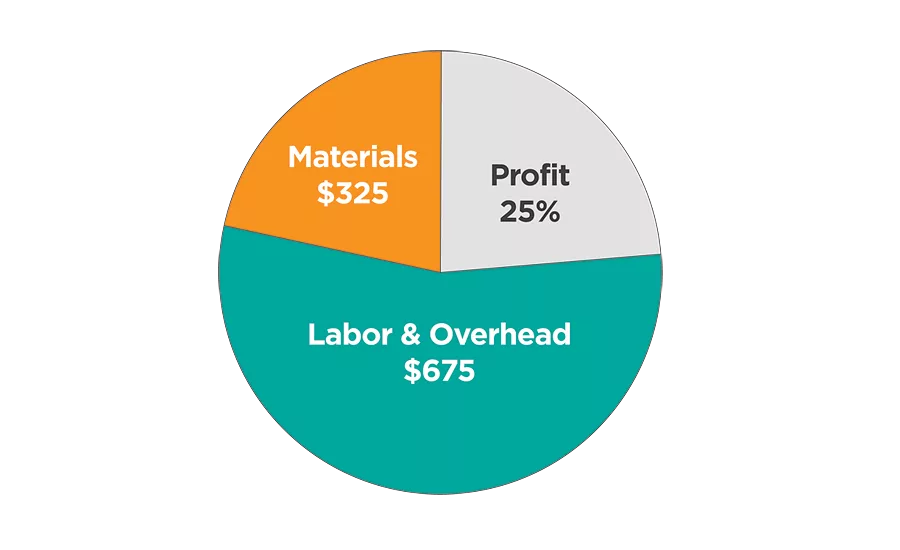Know your numbers
More than 100 contractors were in the room, and everyone was doing their own calculations.

Photo credit: ©istockphoto.com/PeopleImages

How to create the proper selling price.
I learned this lesson 26 years ago when I attended a Frank J. Blau Jr. “Business of Contracting” seminar. Looking back, this was the greatest business day of my life!
March 3, 1990, was a day that changed everything. I was a snot-nosed 32-year-old who knew everything about the plumbing business — or so I thought. I was in a huge ballroom filled with contractors in Wichita, Kan., at a PHCC state convention, and this young pup was listening to some “old fart” who was on stage sharing his knowledge. At one point I thought I was going to sneak out of there early. But then it happened.
Blau, a contractor from Milwaukee, showed the audience his W-2 from the past year. My jaw dropped. My first reaction was, “No way, that’s a pipe dream!” However, it caught my attention and I stayed in the class.
Frank went on to ask, “How many of you know how to create the proper selling price?” Every person in the room raised a hand. Frank stopped, and said, “Is that so? Prove it to me!”
He gave the class a hypothetical job to bid, and I’m going to give you the same hypothetical job right here. Get yourself a calculator, I’ll wait ...
OK, you have $275 in labor, $400 in overhead and $325 in material cost. You are looking to earn a 25% profit on the sales price of the job.
What is the proper selling price for this hypothetical job?
More than 100 contractors were in the room, and everyone was doing their own calculations. Frank walked around the room, observing as each contractor methodically came up with the proper selling price. After about five minutes, he asked each table to pass all answers to the center aisle. Frank walked up and grabbed each row’s answers, walked back to the front of the auditorium, turned around and started reading the numbers.
“1,250; 1,425; 1,200; 2,789; 1,300; 1,185; 1,333.33; 5,860 …” and on he went.
After reading every single answer, he turned and asked the class, “I thought you all said you know how to create the proper selling price?” We came to find out only two people in the whole auditorium knew the right selling price: a wholesaler and a distributor. Not a single contractor knew how to come up the proper selling price — even accountants in the room got it wrong!
It’s just math
Frank went on to teach us how to create the proper selling price. Here’s how: (see chart above).
Materials, labor and overhead made up $1,000 for the cost of the job. We are looking for a 25% net profit.
The math is simple actually, but I remember in third grade when my teacher started introducing the alphabet in math. I mean really, what is “N”? I must admit, third grade was the best three years of my life … so if I can get this, I know you will get this as well.
It’s just math. I learned to love math. Let me walk you through the formula:
$1000/75% + N/25% = X/100%
Back in third grade, we were taught that when adding fractions, you should add the top-line numbers to get your totals. Then the teacher blew my mind and introduced the letter “N” to the other top line: Now it equals “X.” I wanted to curl up and cry. The teacher went on to explain that by dividing the numerator by the denominator we could identify X. Now, if you are about to puke, I get it. Hang in there, take a breath …
In our equation above, the numerator is $1,000 and we are looking first to identify X or the selling price. 1,000 divided by .75 (or 75%) equals $1,333.33.
Now, we can determine our net profit. Take your selling price (X), which is $1,333.33, and subtract the numerator, the $1,000 that represents your cost, to get your profit dollars: $333.33.
$1000/75% + $333.33/25% = $1333.33/100%
Now, how many of you got the answer correct?
As I coach contractors today, I’m always curious how many contractors really know how to create the proper selling price. Nexstar members all go through this exercise on day one! You cannot run a profitable business without totally understanding how to create the proper selling price.
After lunch that day 25 years ago, Frank spoke more about breakeven, and how there is a time and a place to sell at your breakeven.
My question to you now is, what is breakeven in our hypothetical job? Do you know?
In our hypothetical job, breakeven is $1,000. This occurs when 100% of our costs are covered — our material cost, labor cost and overhead cost. So, I’m going to ask you to think for a minute. When would it be OK to take a job at breakeven?
A: Never.
B: I don’t know. (I like the honesty.)
C: After you have covered all your overhead costs for the month.
The answer is “C.” When you have covered your overhead costs for the month, you could take a job at breakeven. Why? You no longer have the hypothetical $400 overhead cost to cover. You could take the job at breakeven or no profit and still make $400 in profit on the job!
I don’t recommend doing this, but you could.
Frank Blau taught me how to fall in love with my numbers, to the point I began dreaming of numbers. I’m still married to the love of my life, but sometimes I cheat on her with the numbers!
This article was originally titled “Know your numbers” in the April 2016 print edition of Plumbing & Mechanical.
Looking for a reprint of this article?
From high-res PDFs to custom plaques, order your copy today!



